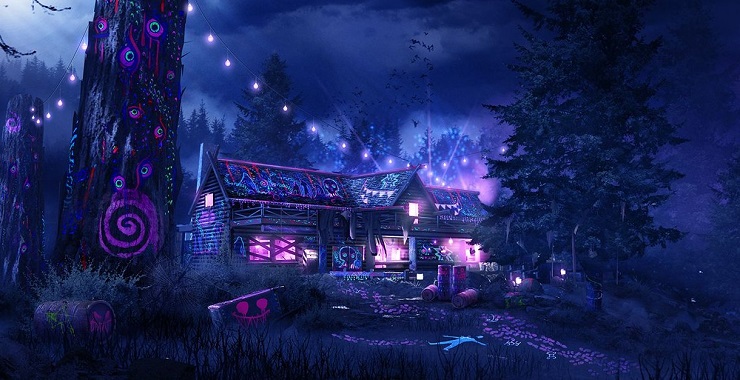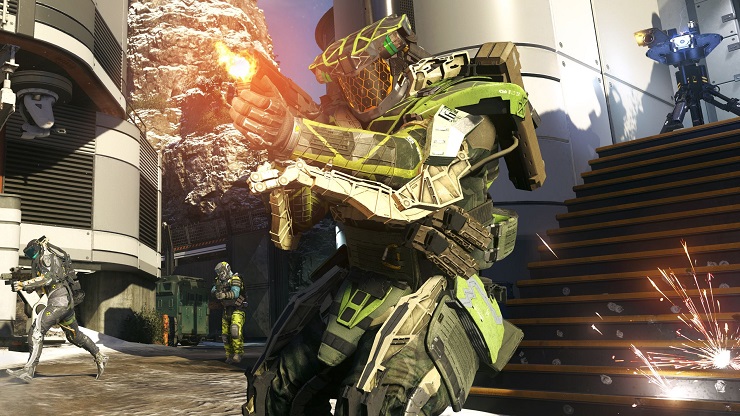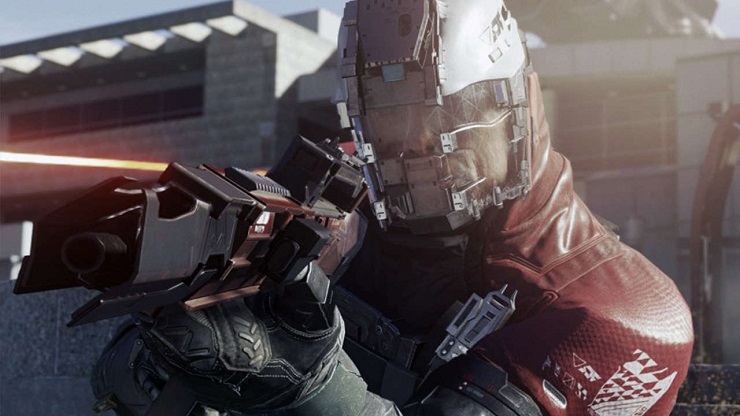To mark the launch of Infinite Warfare’s first DLC pack Sabotage, I got a chance to speak with Infinity Ward’s Scott Carpenter, the Lead Multiplayer Level Designer. We talked about the new maps and the challenges in creating a blend of environments that appeal to different types of Call of Duty players, and how the data gathered from the maps when they are in play informs design decisions going forward.
My first question was around the Dominion map which is a reworking of Afghan from Modern Warfare 2, now set on Mars. Afghan was one of my favourite maps from Modern Warfare 2 released way back when in 2009 and I have fond memories of laughing at my friend trying to hide in bush with very limited success. I asked Scott how the team chooses a map to rework. Is it a simple case of choosing a map that is a clear fan favourite or were there other factors to consider?
“We start by scaling right back, asking the team which of the maps are their favourites, what would they like to see come back” he replies, “then we look at the player data and more often than not what the team likes matches with the community feedback.” Continuing, Scott explains that not all of the back catalogue of maps are compatible with the movement style, “there are some maps from former games that absolutely do not work with the new movement style, but Afghan was different, it was a team and community favourite and it lent itself very well to the new style, so it was an obvious choice. We have also taken on board feedback from the community that there is an appetite for larger maps that have more open areas, and again Afghan fit that requirement perfectly.”
The size of maps is a personal interest of mine as over the years they have been getting increasingly smaller in direct response to community feedback. I asked Scott whether the feedback they had had regarding larger, more open maps was indicative of a shift in preference from the community to go back to the maps that defined the earlier games? “Oh I am not sure about that, if you look at the data across all the Call of Duty games, maps like Dome and of course Nuketown are by far and away the most popular maps. The smaller ones are still the preference.” At this point I explained to Scott that personally my preference was for the larger maps as my reflexes over time have reduced and I need the longer lines of sight in order to feel like I am still competitive. “Oh I hear ya on that” he said laughing, “if you look at our base maps for Infinite Warfare they range from medium to smaller design, but when designing a new map we are always trying to ensure that all types of players can get a great experience from them.”
Moving on, I asked him about the tone of the design for the remaining three maps in the DLC pack. Renaissance, for example, pits players in a modern version of the Italian city of Venice and has a very old school feel to it as you are running around it. In stark contrast, Neon is hyper-futuristic. I asked Scott how they come up with the themes for each map? “The DLC maps really give us a chance to spread our wings a little bit and have some fun”, he says, “with DLC we aren’t constrained too much with keeping the tone of the maps within the fiction of the single player universe. Ultimately, the decision for the theme comes down to the artist and designer working together to create something they find fun and interesting.” Continuing he explains, “grounding is a very important part of what makes a Call of Duty map. There must be a rhythm to the way that it plays.”
We were running out of time, so for my last question I asked Scott about the data they gather from the maps once players have had some time on them. Did that data ever not match how they anticipated how and where most of the player engagements would be? “For the most part yes, the maps play out how we expected them to. You have to understand that once the maps are designed we spend a lot of time play testing them, both within the team and with QA. By the time a map is released it will have inevitably had 100s of hours of time played on it, so we have a pretty good idea what is going to happen when we release it. On the team we have a wide range of playstyles and skills so we have a pretty good idea on what to expect.”
He went on to explain that, of course, when a map is released and thousands of players start to use it, the data does differ a little because regardless of how many hours they spend testing it prior to release they never know how the community will react to it until they get it in their hands. One such example of this is the map Frontier which is one of the base maps, “With Frontier we did have a situation where the player data didn’t quite match up with how we expected the engagements to run out. When we designed it and play tested it, the lower pathway was rarely used and we expected it to be an avenue for players to quickly get from one side of the map to the other quickly without much chance of encountering another player, but what we have seen in the live environment is that it is quite a hotspot for activity which was a little unexpected.”
I wanted to talk a little about the introduction of Zombies in the DLC as this is the first time the Infinity Ward studio has included it in one of their Call of Duty games, but my time was up. All that was left was for me to thank Scott for his time and say goodbye.







